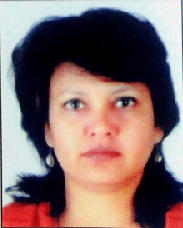 Bengaluru:
Bengaluru: The present-day Poompuhar or Kaveripoompattinam at the mouth of the river Cauvery in Tamil Nadu is not the original location of the famed port city, researchers at the state's Bharatidasan University (BU) report.
The original Poompuhar existed about 30 km east of today's Kaveripoompattinam nearly 20,000 years ago, S.M. Ramasamy, Professor, Centre for Remote Sensing, BU, and co-workers report in the Current Science journal.
It seems to have shifted location four times due to a rise in the sea level and the changing coastline, they report. "The present Poompuhar must be the fourth establishment after the earlier three were swallowed one after the other by the Bay of Bengal," they say.
The BU researchers undertook the study to find an answer to the unsolved scientific debate over the exact location of Poompuhar, the time of its establishment and its lifespan.
According to the researchers, the archaeological remnants of Poompuhar are found scattered in the land region of present day Poompuhar and also offshore about eight kilometre northeast.
This had raised the question whether the on-land and underwater archaeological remains belong to the same Poompuhar or the underwater remains are part of an earlier Poompuhar city. "So, the exact boundary of the city was not known."
Similarly, the age of Poompuhar city has also remained a major enigma, Ramasamy says.
While some studies claimed that it is more than 11,000 years old, Tamil literary works described it was a highly fortified port city during 300 B.C.-300 A.D. Again, Carbon dating done in one of the locations from Poompuhar assigned it the age of 2,300 years.
The BU team carried out the studies using imageries sent by an Indian remote sensing satellite, near-shore topographic data and IPCC (Inter-governmental Panel on Climate Change) data on the rise in sea levels in the last 20,000 years. Combining all this information they derived the sea-levels that existed during six different periods in the last 20,000 years and the coast lines corresponding to those times.
They found that 20,000 years ago, the east coast of what is now Tamil Nadu was 30 km further east from the present coast. "Thus, when the ancient coast was 30 km east of present Poompuhar, there was a huge delta of the Cauvery and the initial establishment of the port city might have come as Poompuhar-A," Ramasamy said.
The researchers found that around 11,000 years ago the sea-level rose to 50 metres below the present mean sea level (MSL) and the coastline shifted to around 20 km from present-day Kaveripoompattinam. "This might have led to the submergence of Poompuhar-A and to the establishment of the second Poompuhar (Poompuhar-B) along the new coast where the Cauvery formed another delta."
When the sea-level further rose and swallowed Poompuhar-B about 9,000 years ago, Poompuhar-C might have been established 5-7 km east of present city. Poompuhar-C also might have suffered the same fate 7,000 years ago, forcing the people to shift further west towards the new coast and establish the present-day Kaveripoompattinam (Poompuhar-D).
"Such constant shifting of the port city appears to be logical under the proven phenomenon of sea-level rise," the researchers conclude.
While their study has thrown new light on Poompuhar, the authors say "more detailed studies are required to bring out the holistic life history of this ancient port city".
Given this hoary past, is it any wonder that the Tamil Nadu government's handicrafts outlets across the country are named "Poompuhar"?
# KS Jayaraman can be contacted at killugud@hotmail.com
 Bengaluru: The present-day Poompuhar or Kaveripoompattinam at the mouth of the river Cauvery in Tamil Nadu is not the original location of the famed port city, researchers at the state's Bharatidasan University (BU) report.
Bengaluru: The present-day Poompuhar or Kaveripoompattinam at the mouth of the river Cauvery in Tamil Nadu is not the original location of the famed port city, researchers at the state's Bharatidasan University (BU) report.